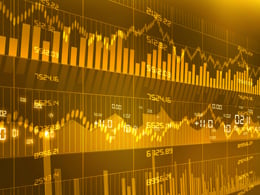 Alpha—the excess return a money manager can generate, above and beyond the return due to general market effects—is an elusive beast.
Alpha—the excess return a money manager can generate, above and beyond the return due to general market effects—is an elusive beast.
It’s defined in opposition to beta, which reflects an investment’s tendency to respond to swings in the market. If your stock has a beta of 1, for example, it tends to move much as the market does. If the market rises 10 percent, and the stock goes up 10 percent (just as expected), how much credit should a manager get?
Searching for alpha
One of the quests of academia has been to explain, as much as possible, the sources of returns. Increasingly, alpha has been redefined as beta exposure to some newly analyzed factor. Value, growth, momentum, size, and many others have been spreadsheeted and published; as more and more factors are included, alpha gets smaller and smaller.
When you move from theory to practice, though, the notion of alpha is very much alive. In fact, it’s the foundation of active management. Anything that’s not a pure index fund is based on the premise that managers can add value—that they can be smarter than the market.
A couple of articles in yesterday’s Wall Street Journal offered different perspectives on this:
- On the front page was "Mutual-Fund King Bill Miller Makes a Comeback," a profile of the legendary stock picker, whose streak of beating the S&P 500 was unparalleled until he “destroyed his reputation in the financial crisis.” In the past three years, though, his fortunes seem to have changed.
- Meanwhile, "Stock Pickers Have Tough Time in 2014" reported that more actively managed mutual funds are trailing the indices than in any year since 2011. For large-cap funds, this is the second worst year since 2004, and the story is similar for many other categories.
So, on one hand, you have a proven stock picker who collapsed in the crisis but has since remade himself. On the other, there’s the fact that most active managers simply aren’t doing it this year. What’s going on here?
Why active managers are underperforming
Investment firms, naturally, have good reasons to explain any underperformance. And, to be fair, one year isn’t the appropriate time frame to judge a manager, as random chance will dominate performance over periods of less than about five years.
Similarly, with the indices performing so strongly over the past two years, any properly diversified portfolio might well have underperformed. Finally, when you build in trading costs and fees, the managers are operating with a handicap compared with the indices.
Is there a happy medium?
That last point alone—trading costs and fees—can explain much of the underperformance. What investors need is a way to take advantage of an index’s lower fees and trading costs, while adding some kind of proven factor exposure to their portfolios in an attempt to generate alpha.
The key to this type of investment is how the index is defined. Most commonly reported indices are based on capitalization-weighted pricing. In other words, as a stock’s price rises, it counts for more in the index, so the highest-priced stocks have the most weight.
Some of the most consistent sources of alpha, in my opinion, have been products that use non-capitalization-weighted indices. By using a product based on an index, you get broad exposure and low costs, but by taking different exposures, you open yourself to the possibility of outperforming the usual indices.
In tomorrow's post, I’ll write more about these alternative indices. Stay tuned!


 Print
Print


